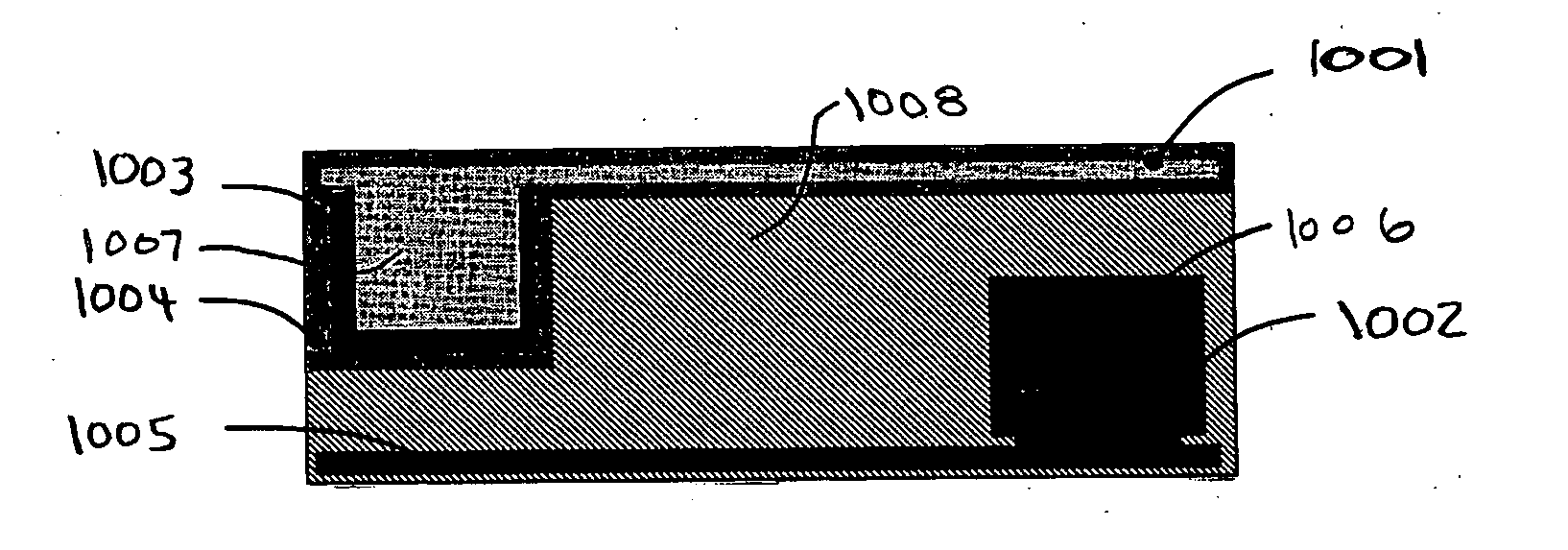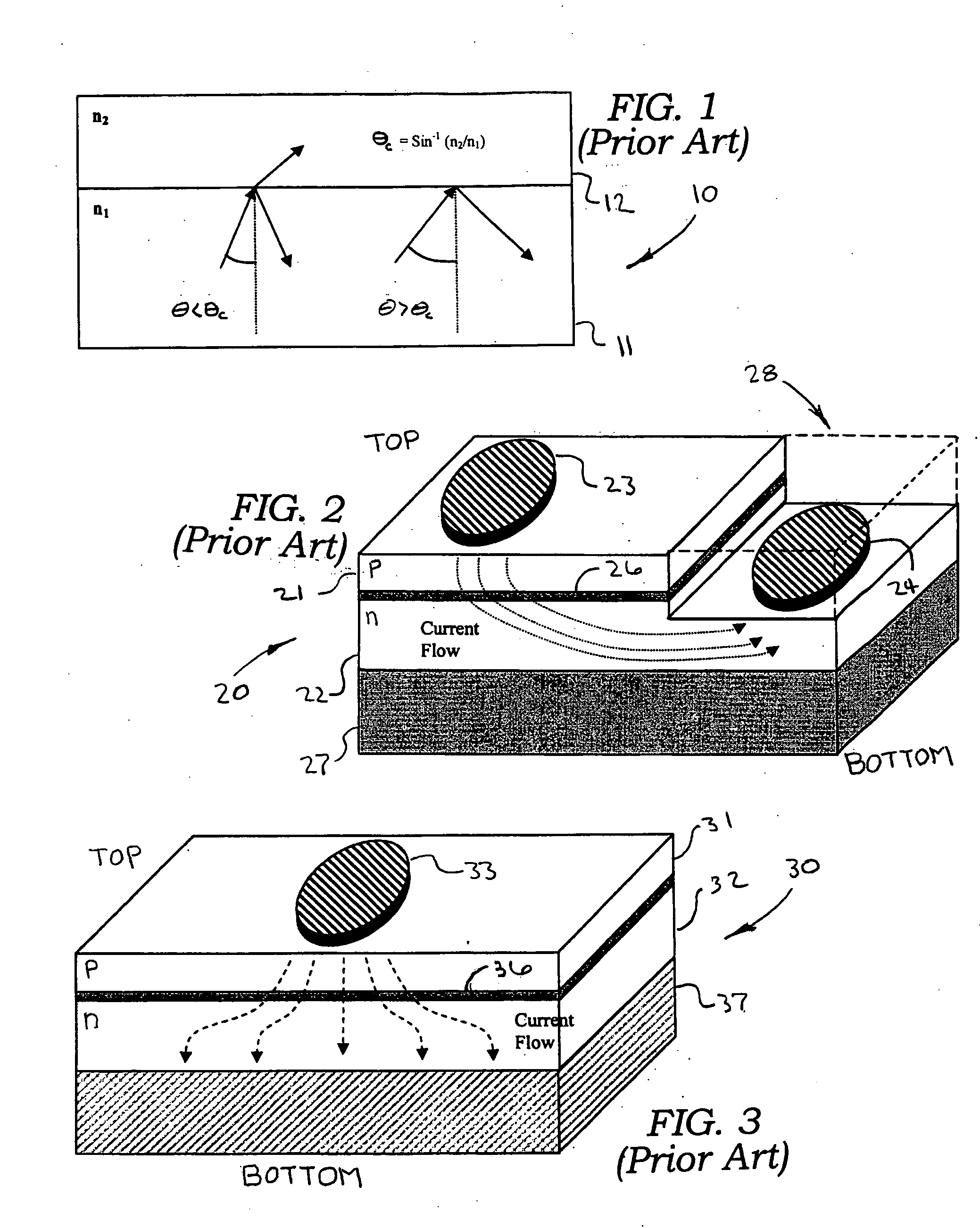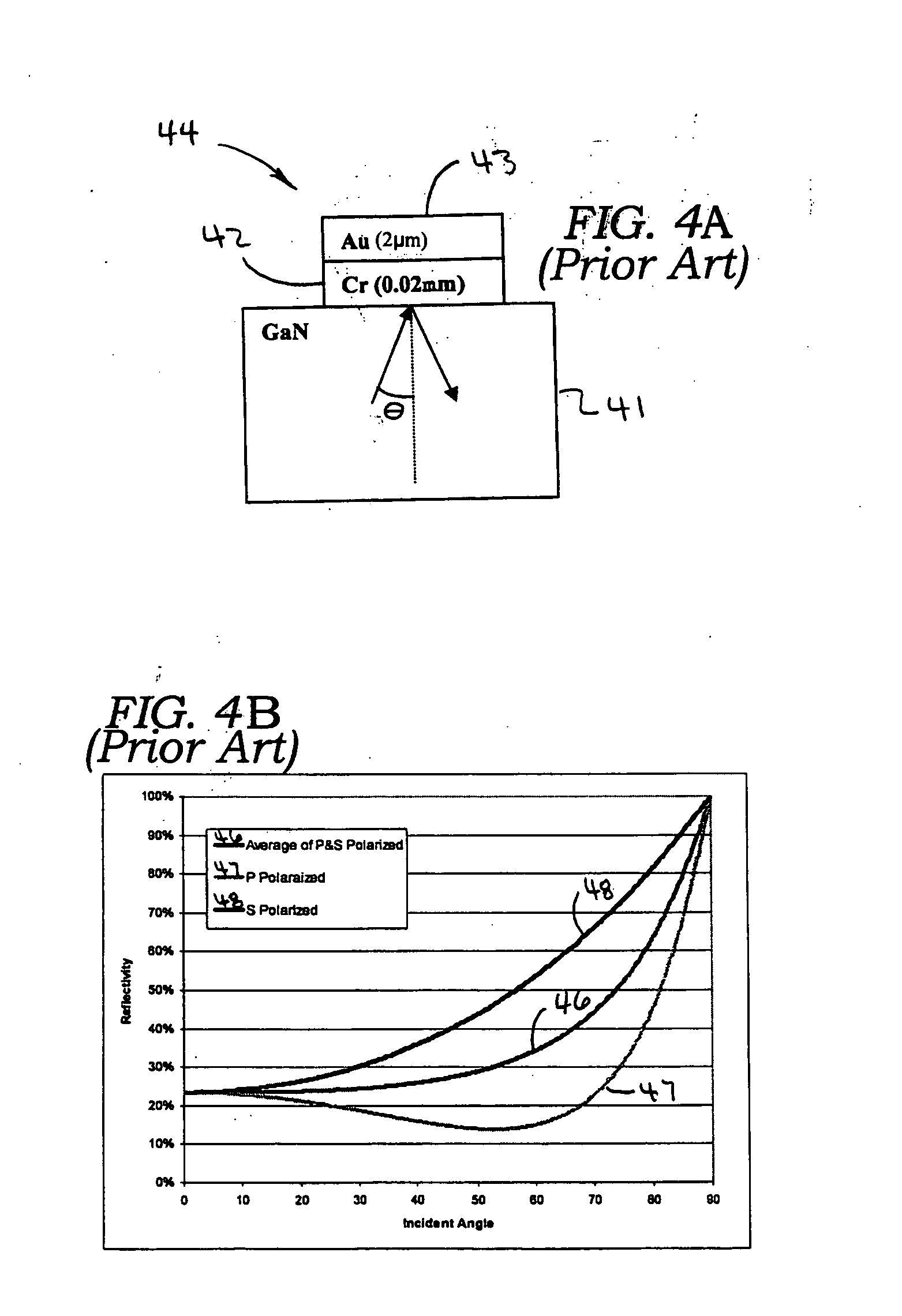Low optical loss electrode structures for LEDs
a technology of low optical loss and electrode structure, applied in the direction of lasers, semiconductor lasers, solid-state devices, etc., can solve the problems of limiting the ability of contemporary leds to function in some applications, reducing the overall effectiveness and desirability of such contemporary leds, and reducing the brightness and/or efficiency of leds, so as to enhance the utility of leds. , the effect of increasing the brightness and/or efficiency
- Summary
- Abstract
- Description
- Claims
- Application Information
AI Technical Summary
Benefits of technology
Problems solved by technology
Method used
Image
Examples
Embodiment Construction
[0079] Light emitting devices (LEDs) emit light in response to excitation by an electrical current. One typical LED has a heterostructure grown on a substrate by metal-organic vapor phase epitaxy or a similar technique. An LED heterostructure includes n-type and p-type semiconductor layers that sandwich a light producing layer, i.e., an active region. Exemplary active areas may be quantum wells surrounded by barrier layers. Typically, electrical contacts are attached to the n-type and p-type semiconductor layers. When a forward bias is applied across the electrical contacts electrons and holes flow from n-type and p-type layers to produce light in the active region. Light is produced according to well known principles when these electrons and holes recombine with each other in the active region.
[0080] The efficiency with which a LED converts electricity to light is determined by the product of the internal quantum efficiency, the light-extraction efficiency, and losses due to elect...
PUM
 Login to View More
Login to View More Abstract
Description
Claims
Application Information
 Login to View More
Login to View More - R&D
- Intellectual Property
- Life Sciences
- Materials
- Tech Scout
- Unparalleled Data Quality
- Higher Quality Content
- 60% Fewer Hallucinations
Browse by: Latest US Patents, China's latest patents, Technical Efficacy Thesaurus, Application Domain, Technology Topic, Popular Technical Reports.
© 2025 PatSnap. All rights reserved.Legal|Privacy policy|Modern Slavery Act Transparency Statement|Sitemap|About US| Contact US: help@patsnap.com



